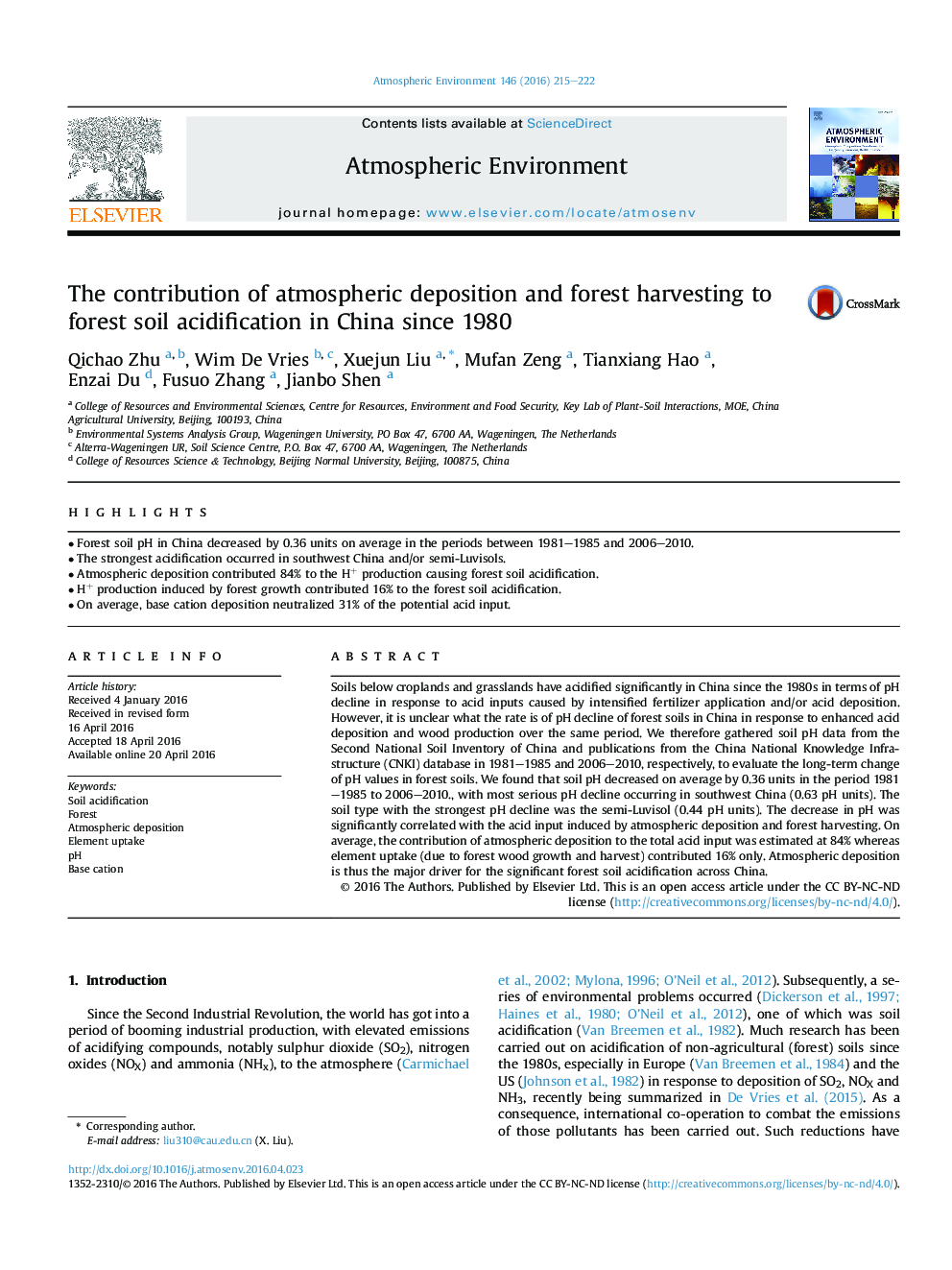| Article ID | Journal | Published Year | Pages | File Type |
|---|---|---|---|---|
| 5753276 | Atmospheric Environment | 2016 | 8 Pages |
â¢Forest soil pH in China decreased by 0.36 units on average in the periods between 1981-1985 and 2006-2010.â¢The strongest acidification occurred in southwest China and/or semi-Luvisols.â¢Atmospheric deposition contributed 84% to the H+ production causing forest soil acidification.â¢H+ production induced by forest growth contributed 16% to the forest soil acidification.â¢On average, base cation deposition neutralized 31% of the potential acid input.
Soils below croplands and grasslands have acidified significantly in China since the 1980s in terms of pH decline in response to acid inputs caused by intensified fertilizer application and/or acid deposition. However, it is unclear what the rate is of pH decline of forest soils in China in response to enhanced acid deposition and wood production over the same period. We therefore gathered soil pH data from the Second National Soil Inventory of China and publications from the China National Knowledge Infrastructure (CNKI) database in 1981-1985 and 2006-2010, respectively, to evaluate the long-term change of pH values in forest soils. We found that soil pH decreased on average by 0.36 units in the period 1981-1985 to 2006-2010., with most serious pH decline occurring in southwest China (0.63Â pH units). The soil type with the strongest pH decline was the semi-Luvisol (0.44Â pH units). The decrease in pH was significantly correlated with the acid input induced by atmospheric deposition and forest harvesting. On average, the contribution of atmospheric deposition to the total acid input was estimated at 84% whereas element uptake (due to forest wood growth and harvest) contributed 16% only. Atmospheric deposition is thus the major driver for the significant forest soil acidification across China.
